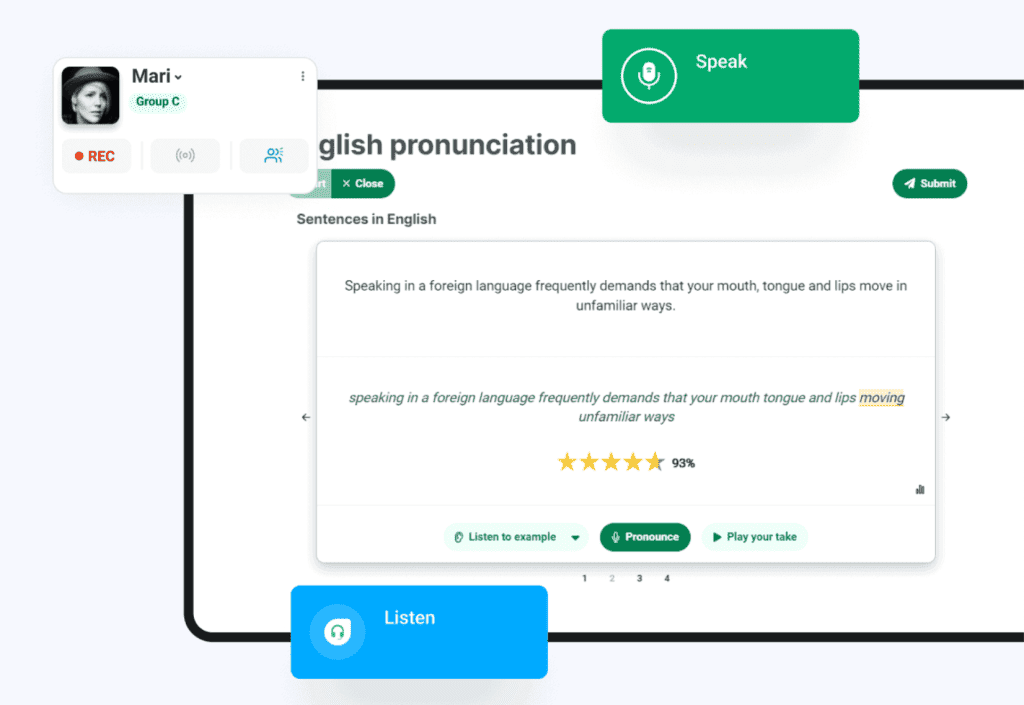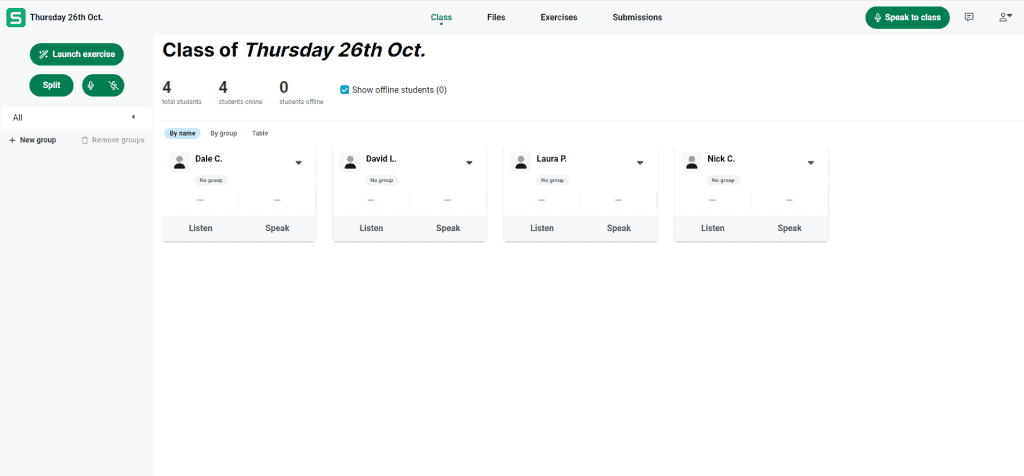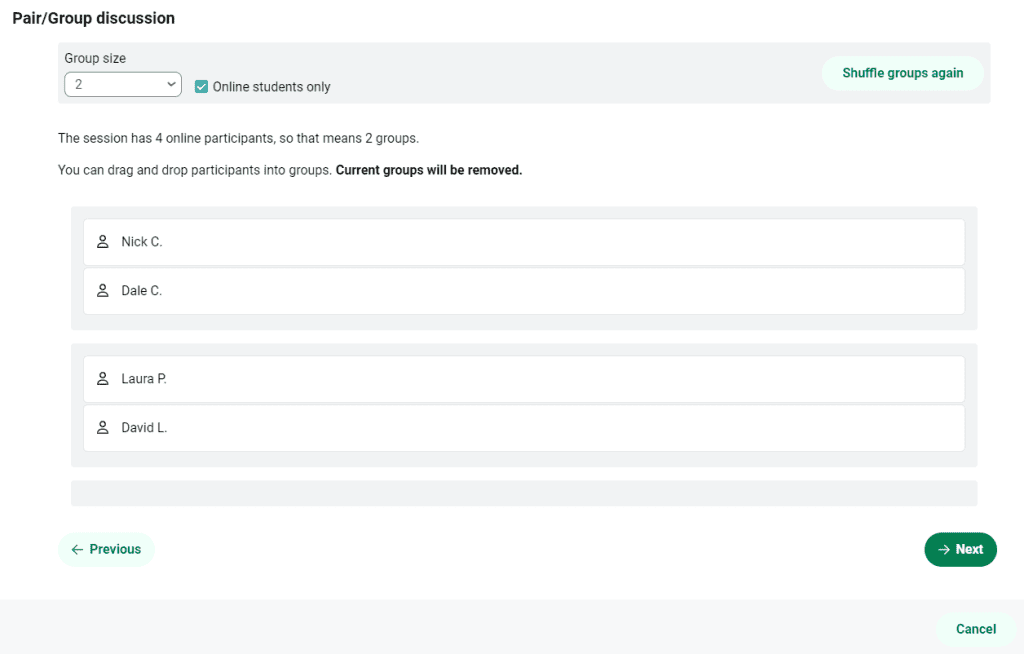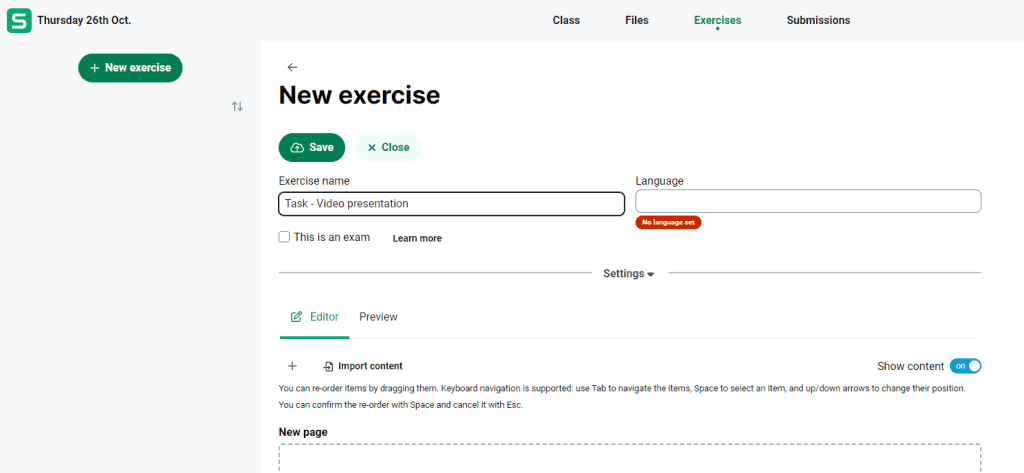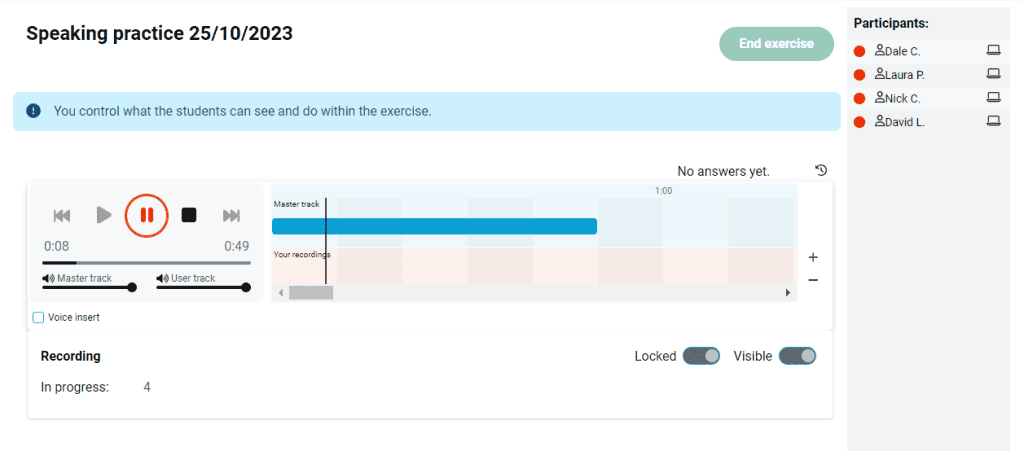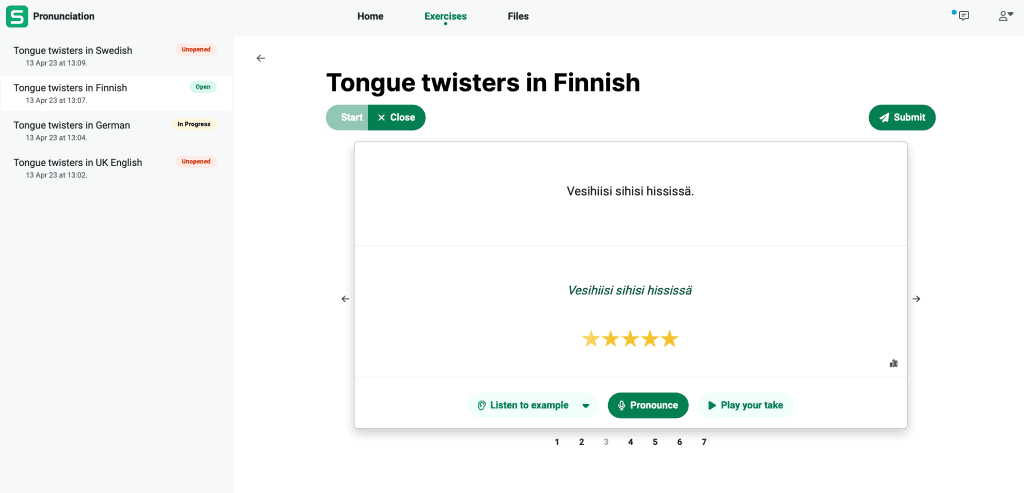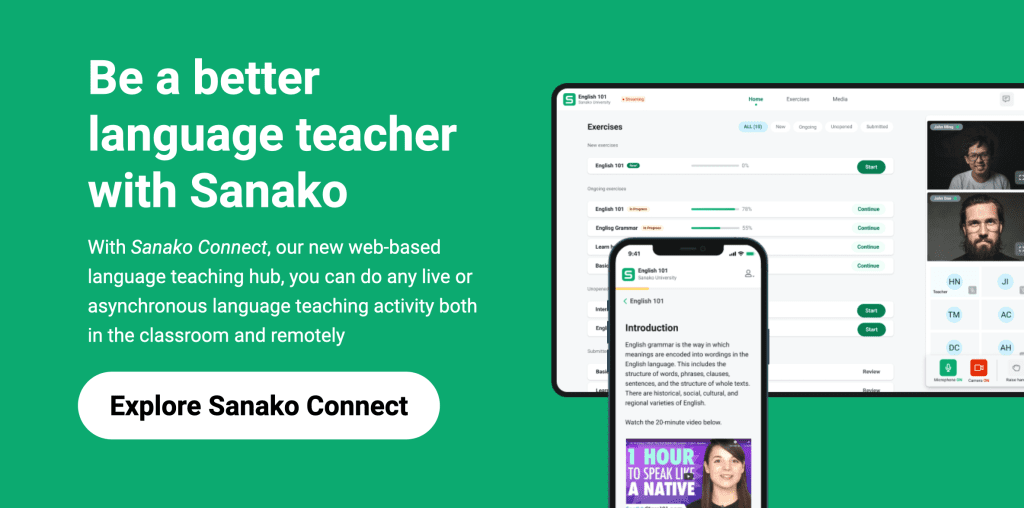Some of the most common language teaching methods, including Audiolingualism, Communicative Language Teaching and Task-based language teaching, have been widely used for many years now. But how can they be delivered, or even improved, through the use of modern educational technologies?
The advent of digital language learning platforms such as Sanako Connect has clearly fundamentally changed the landscape. Teachers are now able to deliver great lessons to students anytime, anyplace and anywhere.
This blog post highlights how ESL and World Language teachers can easily use Sanako Connect to deliver effective English and Foreign language lessons using three of the most popular language teaching approaches – Communicative Language Teaching, Task-based language teaching and Audiolingualism.
Using Sanako Connect to deliver Communicative Language Teaching (CLT)
As detailed in our comprehensive blog post on the topic, CLT classroom approaches prioritise students’ production of speech in their L2 by stimulating conversation for most of the lesson’s duration. The aim is simple:
“to prepare students to be confident communicators in different real-life contexts, through repetitive oral practices and student-student cooperation.“
To illustrate this with a specific example, let’s see how Connect facilitates live pair and / or group discussions in the classroom and remotely. The functionality to deliver these tasks is part of Connect’s core feature set and the system has been developed with professional language educators to make this easy to achieve.
This is the class view inside Sanako Connect. Currently this example class has 4 students online and connected to the classroom.
Educators begin by clicking on the “Launch Exercise” button, which offers a variety of prepared tasks for the teacher to choose from. Select “Pair and group discussion” from the list and educators can then select the total numbers of students participating in the exercise and the number of groups to divide them into.
Connect then randomly assigns students to a group, which educators can then review and easily amend. Alternatively, educators can create the groups themselves by simply dragging and dropping participants into place. These approaches enable educators to pair up students of different abilities and ensure that students aren’t working with the same people every time.
Having allocated students to groups, educators can then provide them with the detailed text instructions for their task. They can provide stimulus material in the form of, for example, a document, a vocabulary list, a picture, a video, or a web link which students review before getting started.
In this example, the teacher has started a live pair discussion activity and shared a vocabulary item list for the students.
When everything is set, the teacher launches the activity and the students are able to start working on the task. Press “start recording” to ensure that all of the individual pair or group discussions are separately recorded, allowing for detailed feedback and review at the end of the activity.
When students reach the end of the allocated time, the educator can easily end the exercise for all students and then automatically collect and collate all of the students’ conversations.
Connect also enables teachers to share the exercise with all students so that they can listen back to their own recordings and identify areas for improvement. The recordings can even be set to remain private so that only the educator can review them. This works well in test or examination settings.
Using Sanako Connect to deliver Task-based language teaching (TBLT)
Ensuring that students see the real-life relevance and usefulness of their language learning goes a long way to ensuring that they remain engaged and motivated throughout. Using task-based language teaching approaches can be a hugely powerful way to achieve this!
The focus of TBLT teaching techniques is concentrated on the completion of a detailed task which learners work through, typically in small groups or teams. Learners use their language skills to complete the task and work through three distinct phases – a pre-task, the task itself and post-task elements. (If you’d like further information on TBLT, check out our blog posts here and here).
Once again, Connect is perfectly set up to help and support teachers when using TBLT methods in their classroom. Particularly as the vast majority of tasks usually involve some form of presentation to demonstrate learning and to provide opportunity for language production.
Following a recent product update, Connect now allows students to record themselves and their screens when delivering their talks. This allows for detailed self or peer evaluation as well as formal review by educators and wider faculty.
Teachers can easily create video recording tasks using the Connect’s content editor.
This functionality can be easily deployed by a teacher when creating an exercise. Educators just create an exercise by providing detailed task instructions to their students. For example: “Write and deliver a five minute presentation about your favourite book or author. Record it using the video recorder below and then submit the final version to me by 1700 this Friday.” These exercise types are also particularly powerful for asynchronous learning tasks.
This is how this example video recording task would look like to the students when the teacher shares this exercise with them.
Students prepare their response and then record a video of themselves delivering it. They can easily review each recording and re-record again and again. Once they are happy with their performance, the recording is easily shared with their teacher. The teacher can of course choose to set up the task so that recording is allowed only once, making it more suitable for formal assessments.
This student is currently recording his speech on J. G. Ballard, his favourite author.
As above, the teacher can give students access to review their work or keep files private. Alternatively, the educator can also share student recordings with the whole class to demonstrate best practice or to highlight grammar and vocab elements that they have been working on in class.
Evidently the above solution works well for individual responses, but it could also be used to record group submissions. If working remotely, students could record their own elements of the presentation and then submit them for review as a group. Alternatively, when working in class, they simply take turns to deliver their section in front of the camera.
Using Connect to deliver Audiolingualism
Our third major teaching approach is audiolingualism, which also prioritises speaking skills and promotes a view of language as principally being an oral form. In it, teachers demonstrate the correct way to use a certain rule or pronounce a key phrase, which students then repeat. Audiolingualism is therefore characterised by its significant use of reinforcement and drilling. (Again, further detail on audiolingualism can be found in our blog post on the topic here.)
Connect enables educators to easily deliver different types of online activity that are perfectly suited to the audiolingualism approach. Two examples follow.
1. Whole class speaking practice
This exercise begins with the educator selecting the “Speaking practice” option from the list of built-in activities. They then add appropriate L2 source material – a file containing L2 audio or video for example. The selected file can be easily uploaded.
When the material is shared with students, they are prompted to listen to the content and to then repeat what they’ve heard. Everything is automatically recorded by Connect with each recording clearly attributed to the individual student. Such activities can be undertaken synchronously in the classroom or asynchronously as homework or extension activities.
When the teacher reviews each student’s recording, they can provide detailed feedback (in spoken or text format) at specific points on the timeline to highlight good pronunciation or where additional work may be required. Students are encouraged to consider these comments and to review their own recordings to identify room for improvement.
2. Pronunciation practice
Teachers can also use Connect to give students endless opportunities to practise their pronunciation and to receive prompt automatically generated feedback.
These exercises begin with the teacher creating a set of words or phrases (up to a max of 200 characters per phrase) for their students to practise on. These are entered into Connect in the students’ L2 and, once saved, are then presented to students as a speaking task. Students listen to each word or short phrase (created by Connect’s text-to-speech engine) before repeating it. Connect quickly analyses their performance, offers brief feedback and encourages them to try again to get full marks. When they’re happy, students submit their response and move onto the next word / phrase. This task type is available in English and in the most modern languages (eg. Italian, French, Spanish, German).
When the students have completed the task, the teacher receives a detailed report highlighting their performance as well as having access to all of the recordings. They can then provide the student with general feedback on their performance across the whole task.
Whatever language you teach and whatever approach you use to teach it, Sanako’s market-leading tools include a wealth of unique features that help language educators teach languages more efficiently and more successfully. It’s why the world’s leading educational institutions choose Sanako as their preferred supplier to support online and in-person lesson delivery.
If you are interested in learning more about how Sanako products support language teachers and students and would like to see how they could benefit your institution, click here or the banner to learn more!
